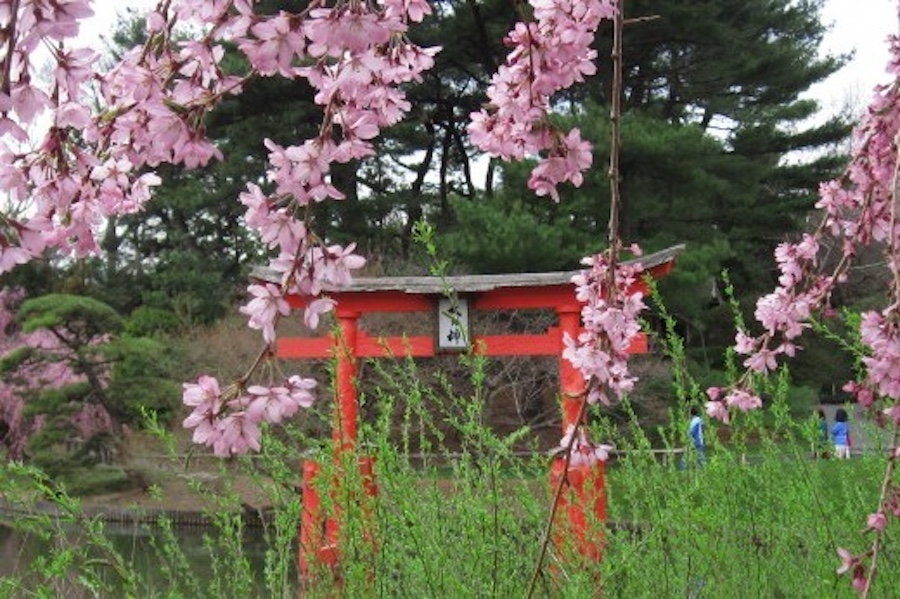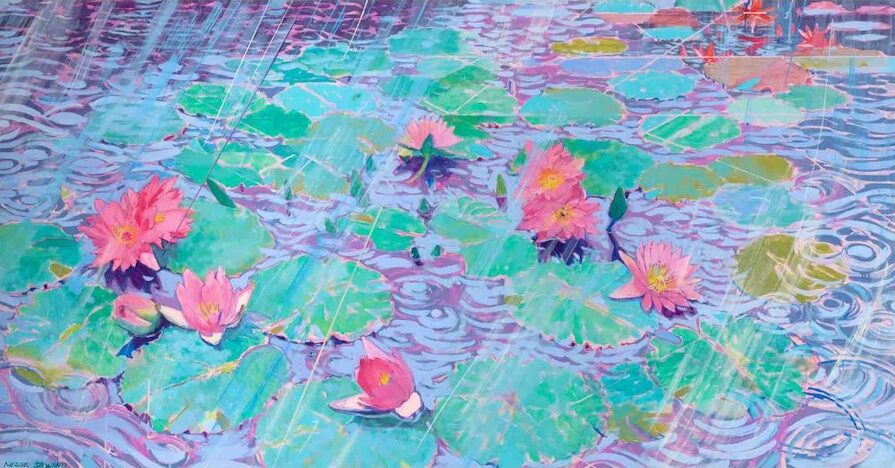Mizue Sawano, born in Osaka, Japan, in 1941 became interested in making art at age five. She now lives in New York City. Her father was a novelist and journalist for the Asahi newspaper. After World War II, her family had to move often. They lived in the beach town of Oiso from 1949 until 1958. Mizue walked the dunes and observed the effects of the wind on the movement of water and plants. She always carried a palate and paint. She won the Gold Prize in the competition for Contemporary Students Oil Painting Exhibition in 1953 at the Tokyo Metropolitan Museum. After she moved to Tokyo in 1959, she attended both Hiratsuka Municipal Konan High School and Tokyo Metropolitan Mita High School. She went on to earn a BA (1965) and an MA (1969) from the Tokyo National University of Fine Arts and Music. With a two-year scholarship from the French Government, she studied at École Nationale Supérieure des Beaux-Arts in Paris. Sawano moved to New York City in 1969 with a US merit scholarship to support her studies the Art Students League.

“Water Lilies” (1976)
Mizue Sawano’s “Water Lilies” (1976) (10’x27’) was selected for the Waldorf Astoria Backdrop Competition by stage designer Oliver Smith. Sawano’s subject matter of choice had been and would continue to be water lilies and cherry blossoms. She is an Impressionist. Her paintings glow with pastel colors and with just enough energy in her brush work as she stated to enter “engagement and dialogue with nature.” Sawano remained connected to Japan and in 1974 won the Gold Prize as Artist of the Year in the Mitsukoshi Department Store competition in Tokyo and Osaka.

Japanese Hill and Pond Garden
The Japanese Hill and Pond Garden opened in 1915 in the Brooklyn Botanical Gardens. Her first visit there was in spring 1975. Every spring Sawano takes small canvases to the garden daily, rain or shine, to paint the water lilies and cherry blossoms as studies for her large-scale oil paintings.

“Rain Growing” (1991)
“Rain Growing” (1991) (58”x96”) emphasizes the circles created by raindrops on the surface of the lily pond. Circles of sunlight spread as the raindrops hit the blue water in the pond. Sawano described her reaction: “In the light of the sun, in the light of the moon, in the winds and in the rain, my heart always touches nature and trembles. I think plants are sexy, be it a flowering plant or a tree. I am attracted strongly to the way sexual things survive. I want to hold them tightly for their vitality. However, I am aware that I cannot possess them. In this world, my hidden passion and desire that are extremely controlled will be moved on with time before they are fulfilled. Unbearable loneliness forces me to pick up my painting brush. I release the pent-up emotion in my body into a form on canvas, praying the universe stays in peace forever. All reality dies. I want to set life force and beauty that last forever on canvas to establish themes immortal. Water circles the earth transforming to clouds and rain. A ripple spreads widely, and the light of the lines extends infinitely. I want to use the scenery that comes into me through my eyes, and I want to give life to my paintings with hopes and love, the energy of the earth and the world of beauty that nobody can see.”

“Water Lilies in the Rain” (1994)
“Water Lilies in the Rain” (1994) (48”x84’’) is an example of one of Sawano’s unique artistic devices: diagonal lines cross the composition indicating the falling rain. She uses diagonal and crisscrossed lines to indicate wind in other paintings. Her color choices are vibrant pinks, soft greens and blues, and the colors of the 19th Century Impressionists. Her paintings remind viewers of Monet, but they maintain Sawano’s vision and originality throughout. Sawano is one of the unique artists who finds endless meaning and beauty in a few themes. She never tires of painting them, always seeing and finding something new and exciting.

“Burst of Spring” (1997)
“Burst of Spring” (1997) is a depiction of the trunk and branches of a cherry tree. The trunk is painted in multiple colors, including dark green, brown, red, and purple. It is similar to the work of the Impressionists, who painted nothing black that was not naturally black. The pink and yellow blossoms of the tree in the distance are suggested. The white blossoms in the foreground have distinct petal edges and shapes. The spring breeze is suggested by the white angled lines passing through the trees.

“Through the Blossoms”
“Through the Blossoms” depicts another of Sawano’s favorite views, looking up into the branches and blossoms of a tree. Although by Sawano, the work is not dated and no dimensions were found. Even if there were no title, the painting would have the same presence and beauty.

“Hope 1”
“Hope I” (20’’x30’’) (oil on linen) is a small painting of cherry blossoms. The title “Hope 1” suggests there are more paintings with this title. Unfortunately, dates are often hard to find on her paintings, and no other works with this title surfaced in research for this article.
Sawano’s work is popular internationally. Beginning in 1992, solo exhibitions of her work have been presented every four years by the Takashimaya Art Gallery. In 1998 a solo exhibition of her painting was presented by the National Museum of Women in the Arts, Washington, DC. The 100th Anniversary of Tokyo’s original gift of 3000 cherry trees to Washington, DC, “as a living symbol of friendship between the Japanese and American peoples,” was celebrated in 2012. The celebration included an exhibit of fifteen Sawano oil paintings. Since 2000, she has been invited on a regular basis to present solo exhibitions and create murals for the International d’Assilah in Morocco. The Japanese-American Association has recognized her for her donations of several works of art over a period 20 years, benefitting New York Japanese communities.

Sawano Exhibition announcement (2016)
Sawano designed exhibition posters for the Brooklyn Botanical Gardens. This 2016 poster, also made into a postcard, is a depiction of various plants reflected in water moved by a gentle breeze. Cherry tree branches hang over the water. Sawano’s brush work is as fluid as the water.

Duck (detail)
Every aspect of a Sawano painting represents her love for her subject and her hope for peace.
Beverly Hall Smith was a professor of art history for 40 years. Since retiring to Chestertown with her husband Kurt in 2014, she has taught art history classes at WC-ALL and the Institute of Adult Learning, Centreville. An artist, she sometimes exhibits work at River Arts. She also paints sets for the Garfield Theater in Chestertown.



Write a Letter to the Editor on this Article
We encourage readers to offer their point of view on this article by submitting the following form. Editing is sometimes necessary and is done at the discretion of the editorial staff.